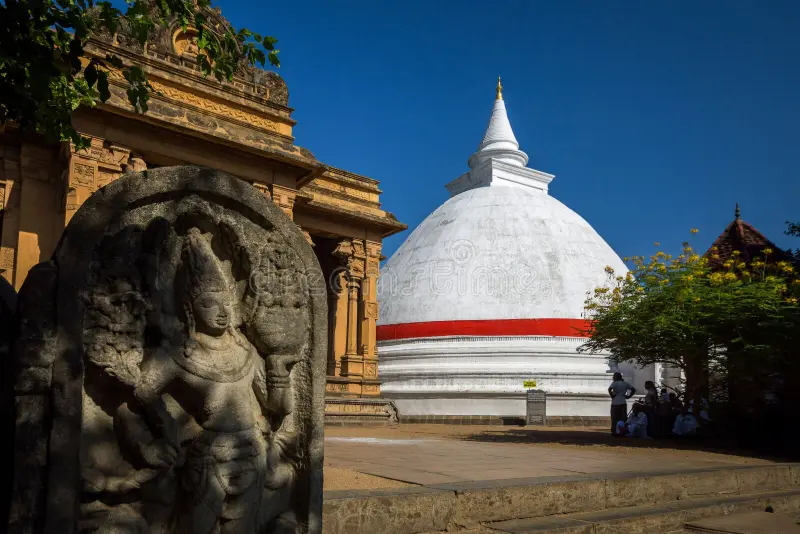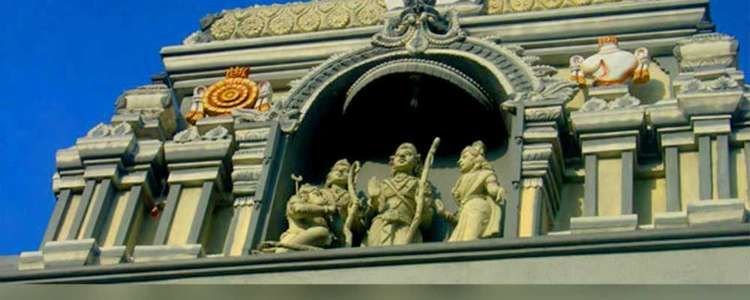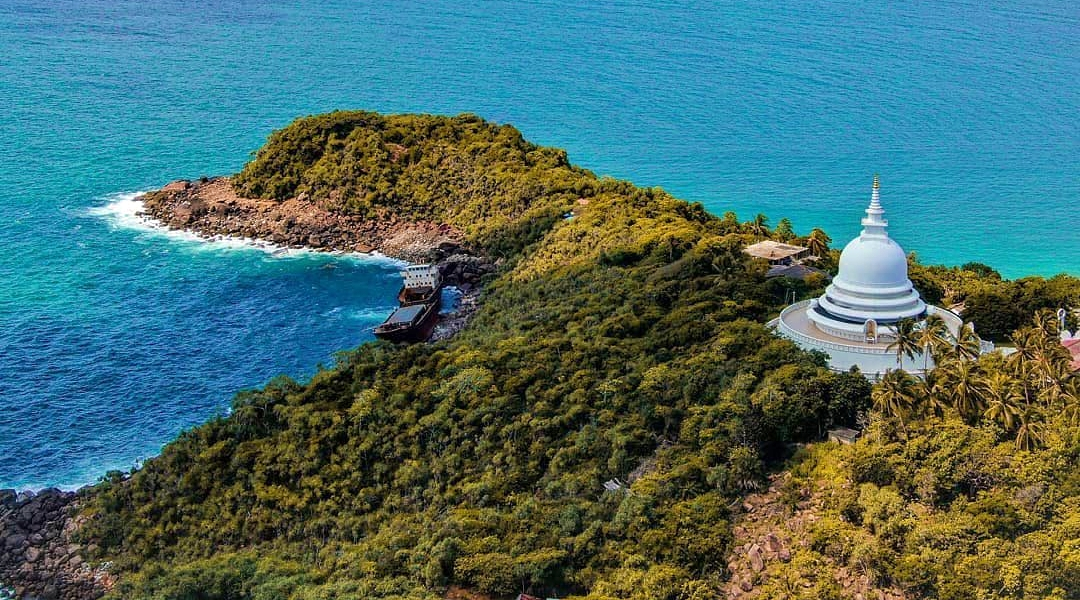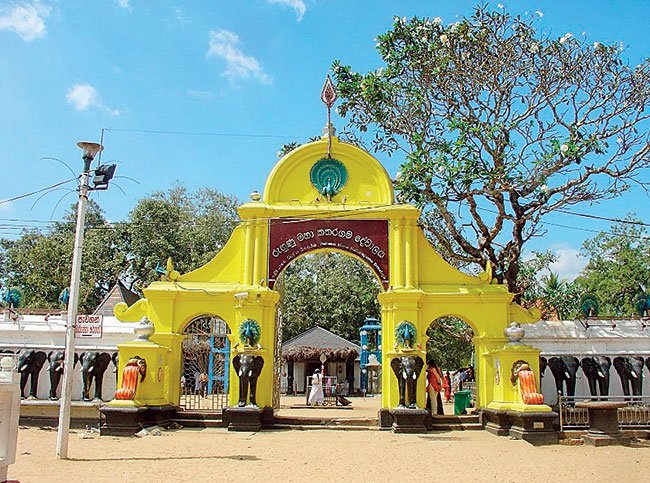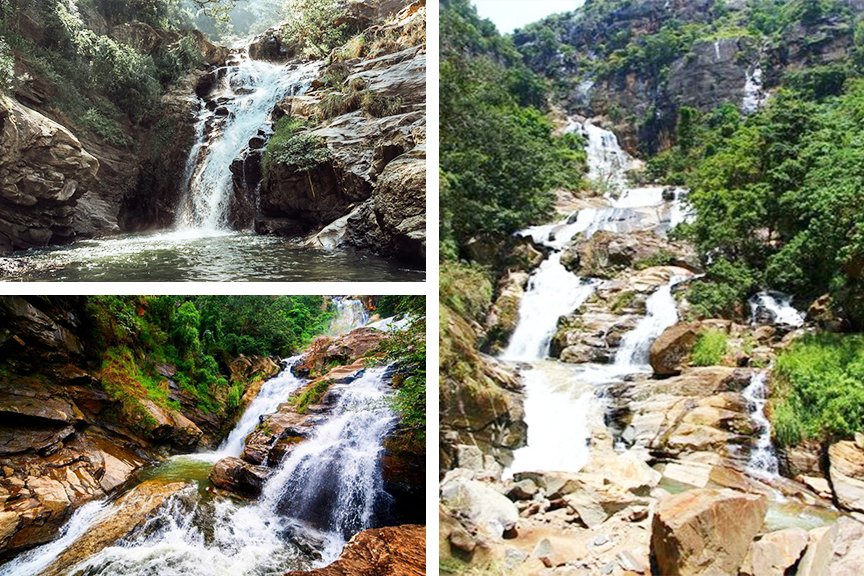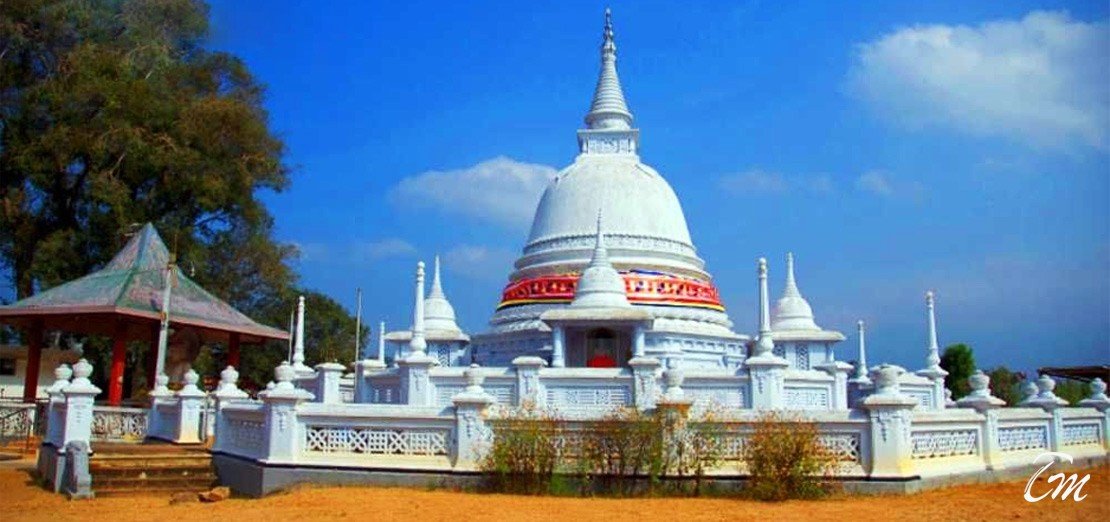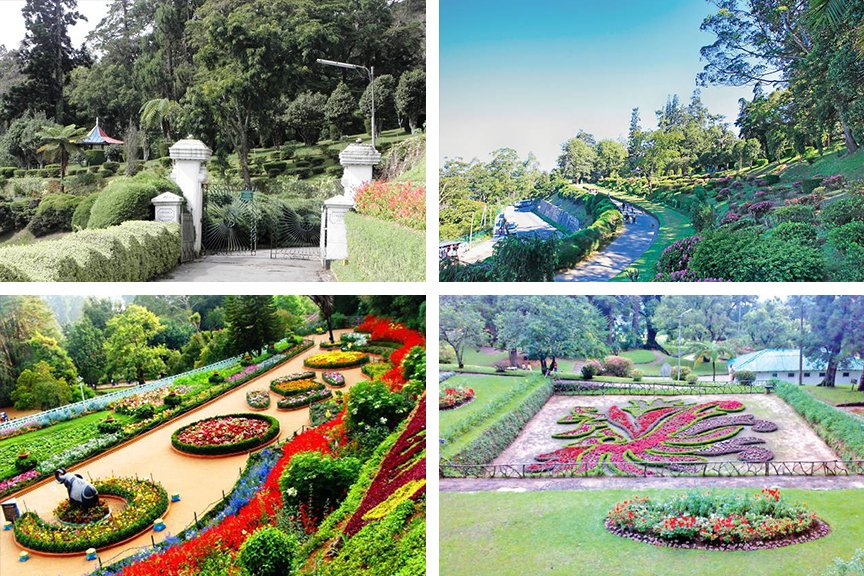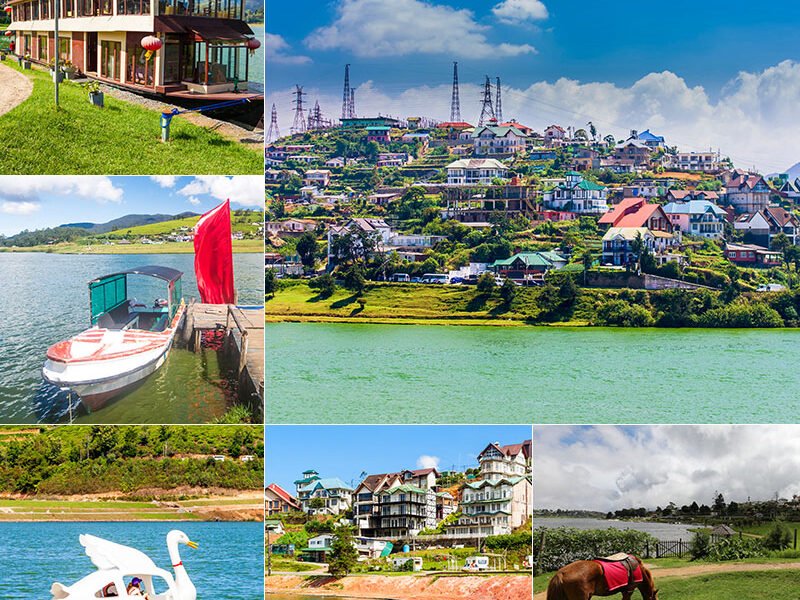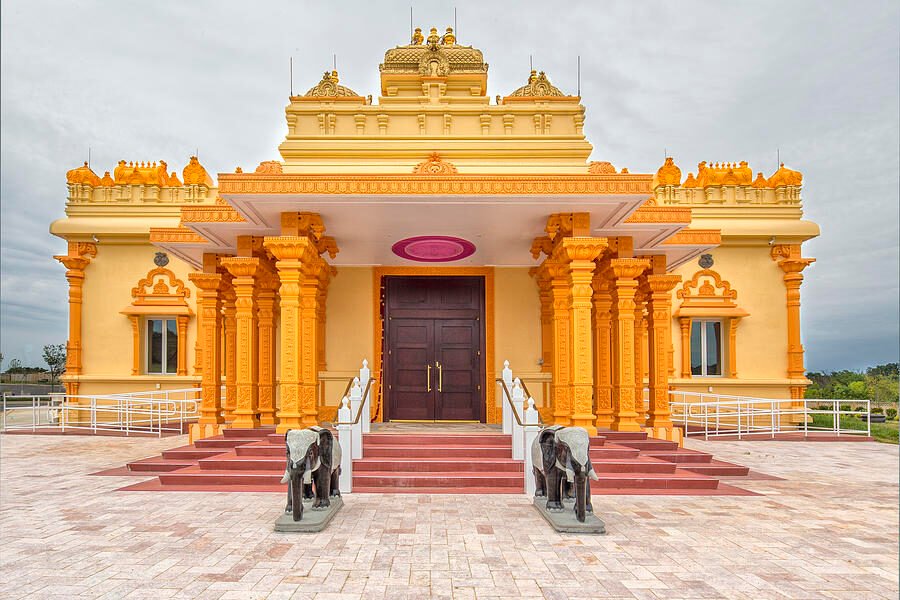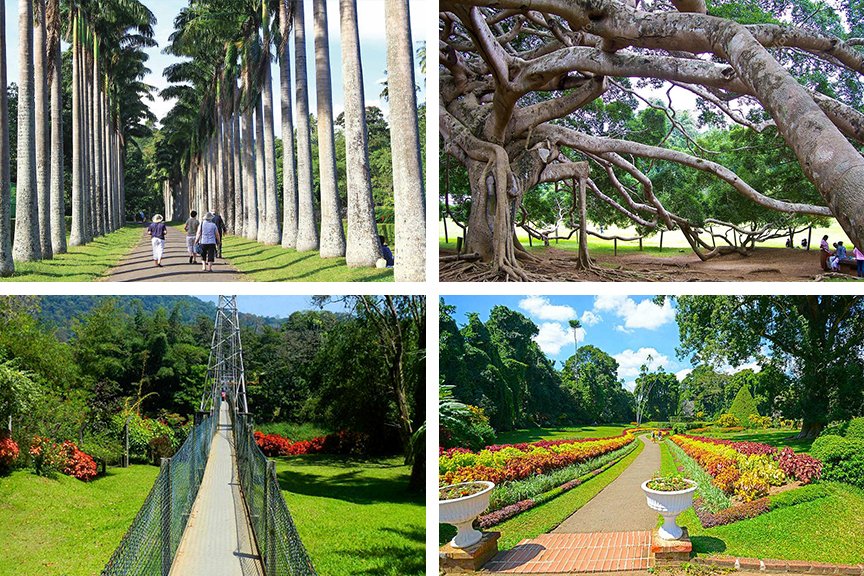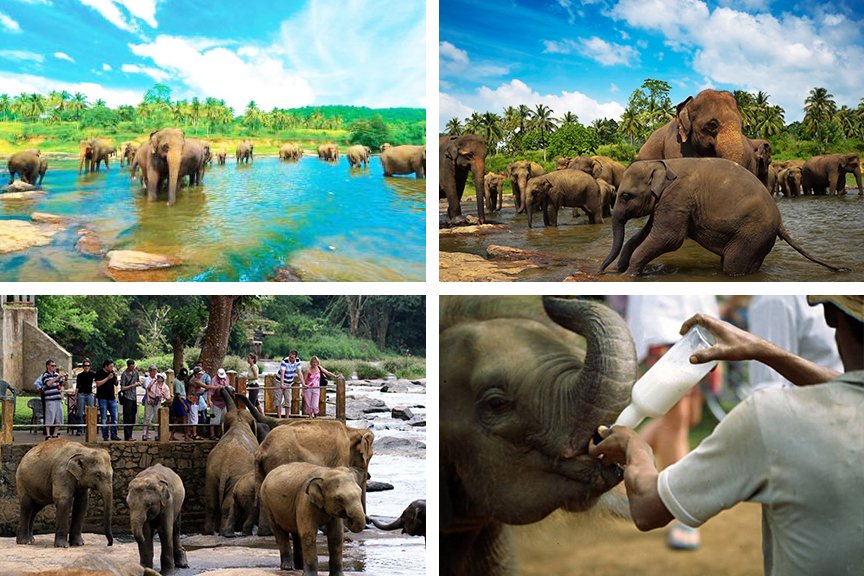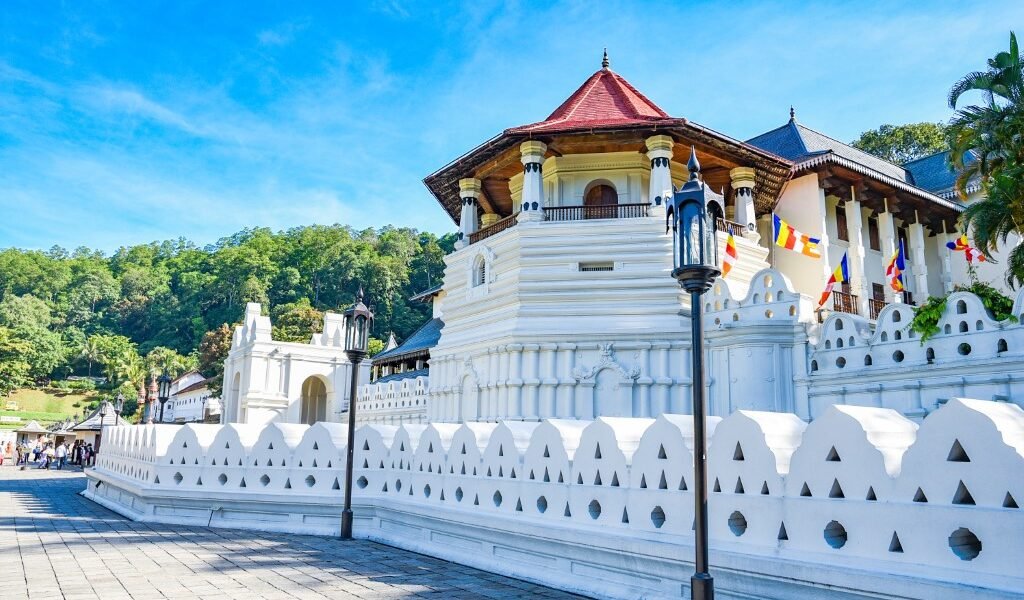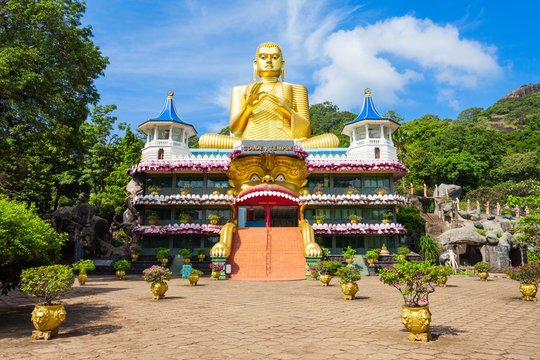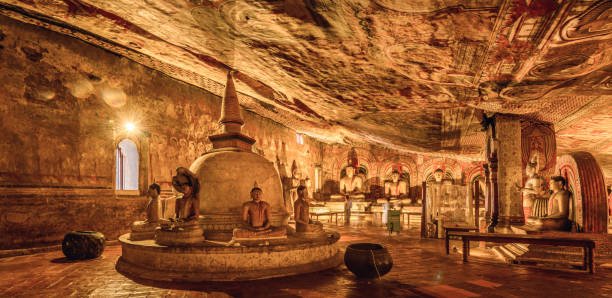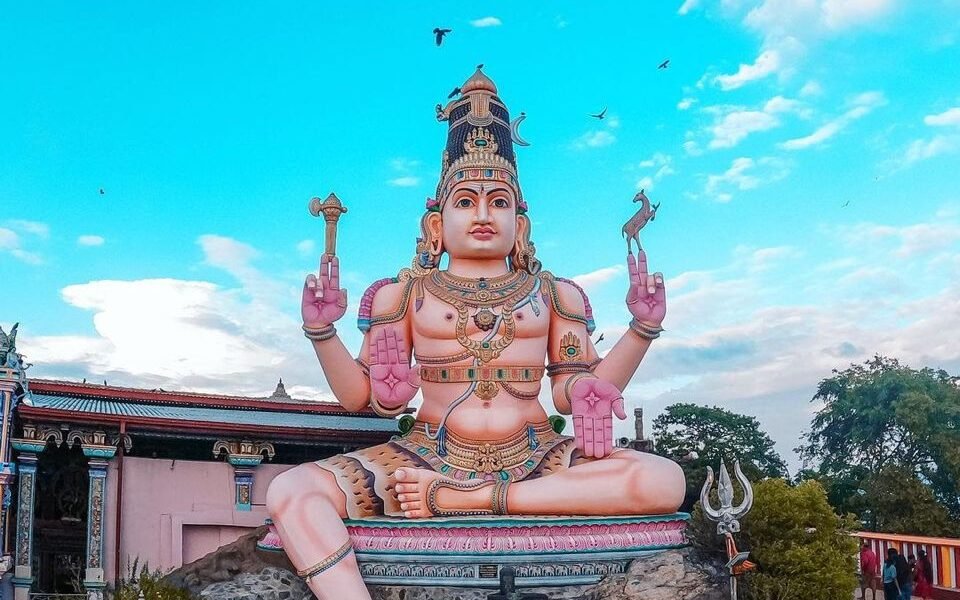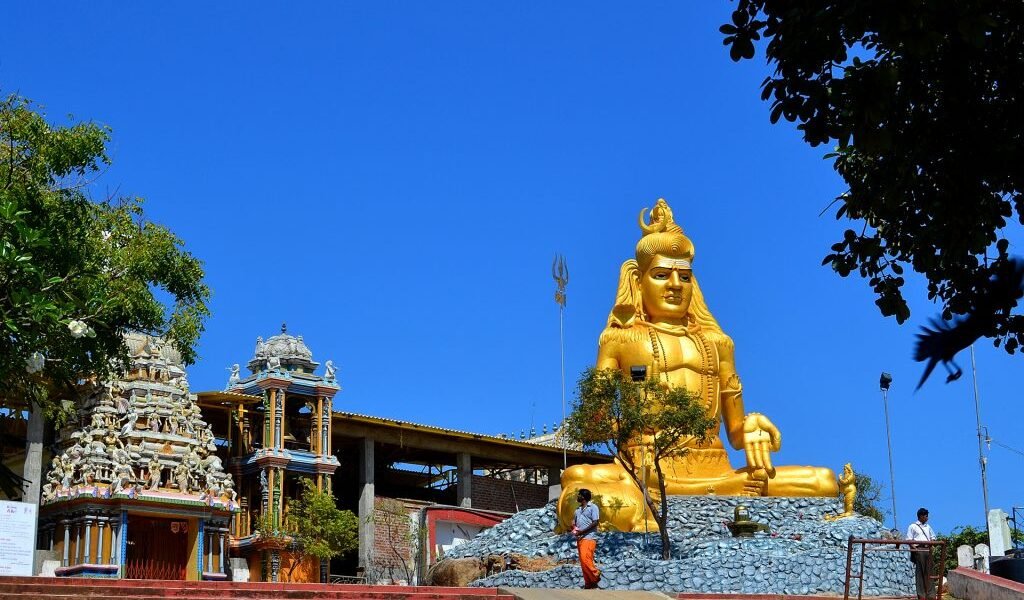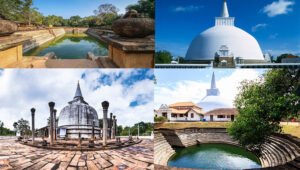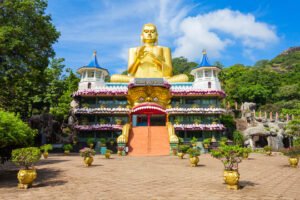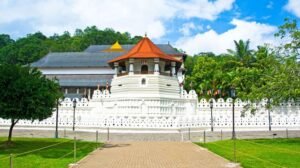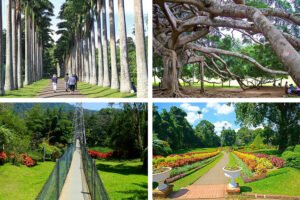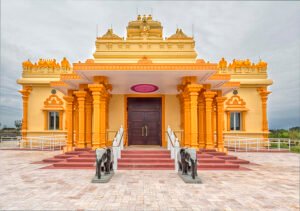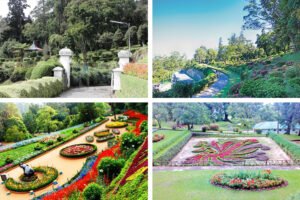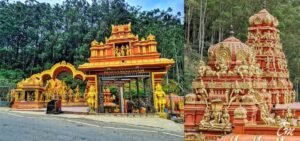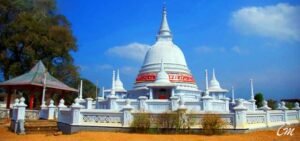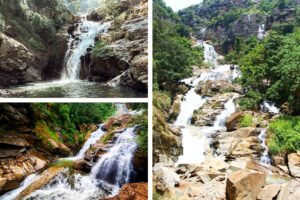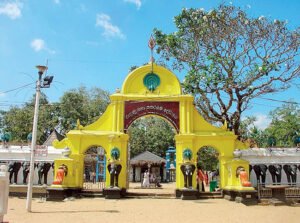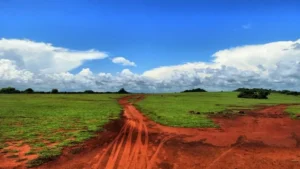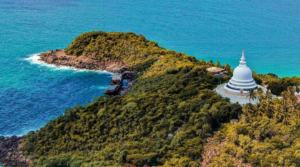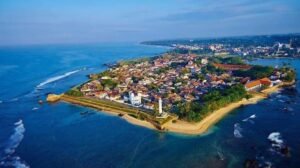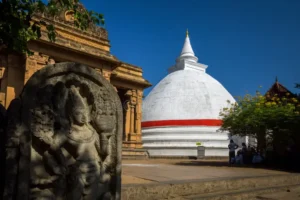(Munneswaram Temple, Manavari Temple, Anuradhapura Ancient City, Thirukonesvaram Temple, Dambulla Cave Temple, Temple of Tooth Relic, Pinnawala Elephant Orphanage, Peradeniya Botanical Garden, Sri Bhaktha Hanuman Temple, o Labukelle Tea Gardens, Gregory Lake, Hakgala Botanical GardensSita, Amman Temple, Divurumpola Temple, Rawana Falls, Kataragama Temple, Ussanggoda Ramayana Site, Rumassala, Old Dutch Fort , Panchamuga Anjaneyar Temple, Kelaniya Temple)
Overview
Munneswaram Temple
Munneswaram Temple, located in Chilaw, Sri Lanka, is a historic Hindu temple dedicated to Lord Shiva. Dating back to the ancient period, it is a revered site for both Hindu and Buddhist devotees. Known for its architectural beauty and spiritual significance, the temple complex includes shrines for several deities and is a focal point for festivals, especially the annual Munneswaram Festival, attracting thousands of pilgrims and tourists.
Manavari Temple
Manavari Temple, situated near Chilaw in Sri Lanka, is a revered Hindu temple dedicated to Lord Shiva. It holds historical significance as one of the sites where Lord Rama is believed to have installed a Shiva Lingam to seek penance for the sin of killing Ravana, a Brahmin. Known as Ramalinga Shivan, the temple attracts pilgrims, especially during the Ramayana trail tours. Its serene environment and spiritual ambiance make it a notable religious site in the region.
Anuradhapura Ancient City
Anuradhapura, an ancient city in Sri Lanka, was the first capital of the island and is renowned for its well-preserved ruins of an ancient Sinhala civilization. Founded in the 4th century BCE, it served as a major center of Theravada Buddhism for many centuries. The city boasts numerous historical sites, including stupas, monasteries, and palaces, with the sacred Sri Maha Bodhi tree being a focal point. Anuradhapura’s rich history and archaeological treasures make it a UNESCO World Heritage site and a significant destination for both pilgrims and tourists.
Thirukonesvaram Temple
Thirukoneswaram Temple, located in Trincomalee, Sri Lanka, is a prominent Hindu temple dedicated to Lord Shiva. Perched atop Swami Rock, it offers stunning views of the Indian Ocean. The temple, with a history dating back over two millennia, is known for its rich cultural and spiritual heritage. It is a key pilgrimage site, particularly during the annual Koneswaram Temple Festival, and is renowned for its Dravidian architecture, intricate carvings, and vibrant religious ceremonies.
Dambulla Cave Temple
Dambulla Cave Temple, located in central Sri Lanka, is a renowned Buddhist temple complex known for its ancient cave paintings and statues. Dating back to the 1st century BCE, it consists of five main caves filled with over 150 Buddha statues, murals, and religious artwork. A UNESCO World Heritage site, the temple is a major pilgrimage destination and a significant cultural landmark, showcasing the artistic and spiritual achievements of Sri Lankan Buddhism. The site offers stunning views of the surrounding plains, enhancing its serene and sacred atmosphere.
Temple of Tooth Relic
The Temple of the Tooth Relic, located in Kandy, Sri Lanka, is a revered Buddhist temple housing the sacred tooth relic of Lord Buddha. This UNESCO World Heritage site is a major pilgrimage destination and cultural landmark. The temple’s stunning architecture, vibrant rituals, and annual Esala Perahera festival attract thousands of devotees and tourists. Nestled in the royal palace complex, it symbolizes Sri Lanka’s rich religious heritage and historical significance.
Pinnawala Elephant Orphanage
Pinnawala Elephant Orphanage, located in Sri Lanka, is a sanctuary dedicated to the care and conservation of orphaned and injured elephants. Established in 1975, it provides a safe haven for these gentle giants, offering visitors the unique opportunity to observe and interact with them. The orphanage is renowned for its daily routines, including elephant feeding and bathing in the nearby river, attracting tourists and animal lovers worldwide. It plays a crucial role in wildlife conservation and education, emphasizing the importance of protecting Sri Lanka’s elephant population.
Peradeniya Botanical Gardens
Peradeniya Botanical Gardens, located near Kandy, Sri Lanka, is a renowned botanical garden established in 1821. Spanning 147 acres, it features a diverse collection of over 4,000 plant species, including orchids, palms, medicinal plants, and towering trees. The gardens are famous for their stunning landscapes, the iconic Royal Palm Avenue, and the giant Javan fig tree. A major tourist attraction, they offer a serene environment for visitors to explore Sri Lanka’s rich botanical heritage and biodiversity.
Sri Bhaktha Hanuman Temple
Sri Bhaktha Hanuman Temple, located on the picturesque hills of Ramboda in Sri Lanka, is dedicated to Lord Hanuman, a revered figure in Hindu mythology. Established by the Chinmaya Mission, the temple commemorates Hanuman’s search for Sita in the Ramayana. It offers breathtaking views of the surrounding landscape and provides a serene atmosphere for devotion and meditation. The temple attracts numerous pilgrims and tourists, particularly during the annual Hanuman Jayanti festival, and is a significant site on the Ramayana trail in Sri Lanka.
Labukelle Tea Gardens
Labukelle Tea Gardens, located in Nuwara Eliya, Sri Lanka, are renowned for their lush tea plantations and scenic beauty. Established in the 19th century, these gardens produce some of the finest Ceylon tea. Visitors can tour the tea factory to learn about the tea-making process, enjoy tea tastings, and explore the picturesque landscapes. The gardens offer a tranquil retreat with panoramic views of rolling hills and verdant valleys, making them a popular destination for both tea enthusiasts and tourists seeking a serene escape.
Gregory Lake
Gregory Lake, nestled in Nuwara Eliya, Sri Lanka, is a picturesque man-made lake built during the British colonial period. Spanning 91 acres, it offers recreational activities such as boating, jet skiing, and lakeside walks. Surrounded by lush green hills and scenic landscapes, Gregory Lake is a popular tourist attraction and a serene getaway in the cool hill country climate. The lake’s tranquil ambiance, combined with its scenic beauty and opportunities for leisure activities, makes it a favorite destination for both locals and tourists visiting Nuwara Eliya.
Hakgala Botanical GardensSita
Hakgala Botanical Gardens, situated near Nuwara Eliya in Sri Lanka, is renowned for its diverse plant collection and scenic beauty. Established in the 19th century, it spans over 28 hectares and features a wide array of flora, including orchids, roses, and ferns. The gardens are particularly famous for their connection to the Ramayana legend, with the nearby Hakgala Peak believed to be the place where Sita, consort of Lord Rama, was held captive by the demon king Ravana. This historical and botanical gem attracts visitors seeking both natural beauty and cultural significance.
Amman Temple
Amman Temple, found in various locations across South India and Sri Lanka, is dedicated to the worship of Goddess Amman, a revered deity in Hinduism symbolizing feminine energy and fertility. These temples are known for their vibrant rituals, colorful festivals, and intricate architecture that reflects Dravidian styles. Devotees visit to seek blessings for prosperity, health, and protection. The temples often feature ornate gopurams (tower gateways), sacred ponds, and statues of various Hindu gods and goddesses. Amman Temples serve as spiritual hubs and cultural landmarks, playing a vital role in the religious and social fabric of their communities.
Divurumpola Temple
Divurumpola Temple, located near Nuwara Eliya in Sri Lanka, holds historical significance as a sacred site where Sita, consort of Lord Rama, underwent an ancient trial by fire to prove her purity. Devotees believe this event from the Ramayana took place at this tranquil temple. Today, it stands as a revered pilgrimage destination, attracting visitors seeking blessings of purity, harmony, and marital happiness. The temple’s serene surroundings and spiritual ambiance make it a poignant reminder of the epic’s enduring cultural and religious influence in Sri Lanka.
Rawana Falls
Rawana Falls, situated near Ella in Sri Lanka, is a majestic waterfall cascading from a height of approximately 25 meters. Named after King Ravana from the Ramayana epic, it is surrounded by lush greenery and offers a breathtaking natural spectacle. The falls are accessible via a short hike through the scenic countryside, making it a popular stop for tourists exploring the hill country. Legend has it that King Ravana’s kingdom included this enchanting area, adding to the falls’ cultural and historical allure. Rawana Falls provides a refreshing retreat and a picturesque backdrop for nature enthusiasts and travelers alike.
Kataragama Temple
Kataragama Temple, located in southern Sri Lanka, is a revered multi-religious pilgrimage site dedicated to Lord Murugan (Skanda) and other deities. It attracts devotees from various faiths, including Hindus, Buddhists, Muslims, and even Christians, symbolizing Sri Lanka’s religious harmony. The temple complex includes shrines, ponds, and sacred areas where rituals and ceremonies are performed daily. The annual Esala Perahera festival, held here, is a vibrant celebration drawing pilgrims and tourists alike. Known for its spiritual significance and cultural diversity, Kataragama Temple embodies Sri Lanka’s rich religious heritage and serves as a testament to unity amidst diversity.
Ussanggoda Ramayana Site
Ussangoda Ramayana Site, located in southern Sri Lanka, is a unique geological formation steeped in mythological lore from the Ramayana epic. According to legend, this coastal area is believed to be where the demon king Ravana landed his chariot when abducting Sita. The site’s distinct red soil and barren landscape create a dramatic backdrop for its cultural significance. Visitors can explore the area’s myths and natural beauty, enjoying panoramic views of the Indian Ocean. Ussangoda Ramayana Site offers a blend of history, mythology, and scenic allure, attracting both pilgrims and curious travelers exploring Sri Lanka’s cultural tapestry.
Ussangoda Ramayana Site, located in southern Sri Lanka, is a unique geological formation steeped in mythological lore from the Ramayana epic. According to legend, this coastal area is believed to be where the demon king Ravana landed his chariot when abducting Sita. The site’s distinct red soil and barren landscape create a dramatic backdrop for its cultural significance. Visitors can explore the area’s myths and natural beauty, enjoying panoramic views of the Indian Ocean. Ussangoda Ramayana Site offers a blend of history, mythology, and scenic allure, attracting both pilgrims and curious travelers exploring Sri Lanka’s cultural tapestry.
Rumassala
Rumassala, located near Galle in southern Sri Lanka, is a mystical hill shrouded in legend and natural beauty. Known for its lush tropical forests and secluded beaches, Rumassala is believed to be part of the mythical Himalayan mountain range carried by Hanuman during the Ramayana epic. It offers panoramic views of the Indian Ocean and is home to diverse flora and fauna, including endemic species. Rumassala’s tranquil ambiance and cultural significance as a mythical site attract visitors seeking both natural serenity and a connection to Sri Lanka’s rich spiritual heritage.
Old Dutch Fort
The Old Dutch Fort, located in Galle, Sri Lanka, is a historic fortress built by the Dutch in the 17th century. It stands as a testament to colonial architecture and engineering, encompassing a blend of European and Asian influences. This UNESCO World Heritage site features massive ramparts, bastions, and a picturesque setting overlooking the Indian Ocean. Within its walls, visitors can explore quaint streets lined with colonial-era buildings, museums, and art galleries. The Old Dutch Fort remains a popular destination for history enthusiasts and travelers seeking a glimpse into Sri Lanka’s colonial past amidst a charming coastal backdrop.
Panchamuga Anjaneyar Temple
Panchamuga Anjaneyar Temple, situated in Trincomalee, Sri Lanka, is a significant Hindu temple dedicated to Lord Hanuman with five faces. It stands as a symbol of devotion and resilience, believed to have been built atop a cliff where Hanuman landed while searching for medicinal herbs during the Ramayana epic. The temple offers stunning views of the Indian Ocean and hosts ceremonies honoring Hanuman’s valor and devotion. Pilgrims and tourists visit to seek blessings for courage, protection, and spiritual fulfillment. Panchamuga Anjaneyar Temple is revered for its spiritual ambiance and cultural importance in Sri Lanka’s religious landscape.
Kelaniya Temple
Kelaniya Temple, located near Colombo in Sri Lanka, is a revered Buddhist temple with a history dating back over 2,000 years. It is believed to have been visited by Lord Buddha himself and holds significant religious and cultural importance. The temple’s architecture reflects traditional Sinhalese design, featuring intricate carvings, vibrant paintings, and a sacred stupa. Kelaniya Temple is a place of pilgrimage and meditation, attracting devotees seeking blessings of prosperity, health, and spiritual well-being. Its serene surroundings and historical significance make it a prominent destination for both locals and tourists exploring Sri Lanka’s rich Buddhist heritage.


